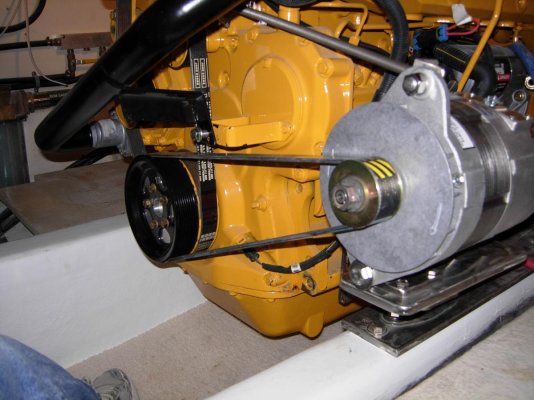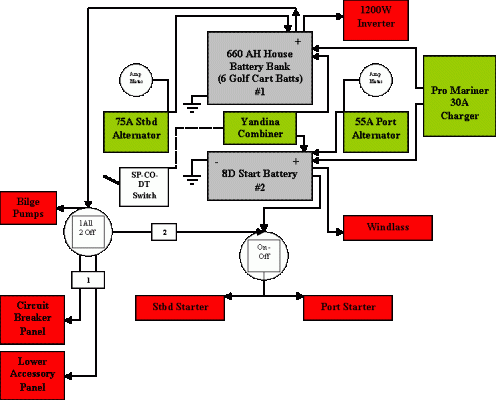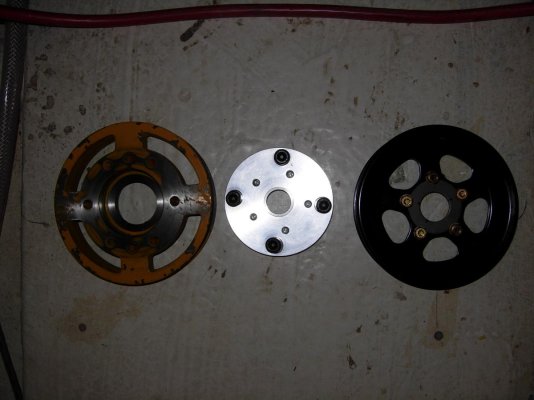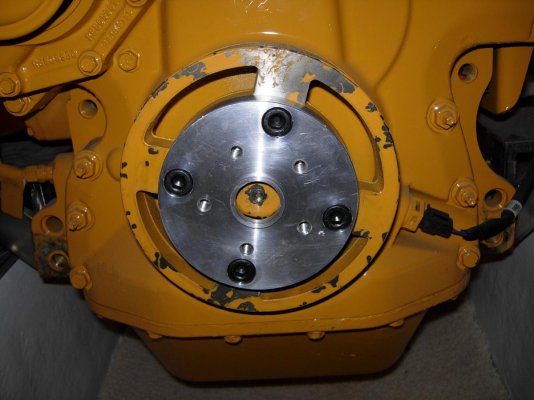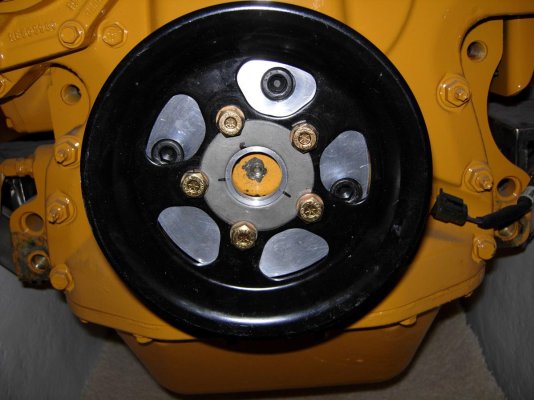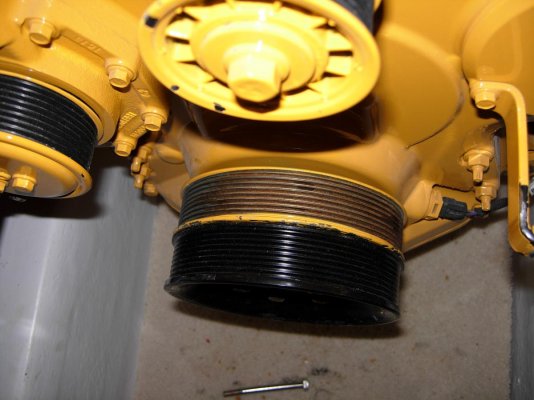mvweebles
Guru
- Joined
- Mar 21, 2019
- Messages
- 7,780
- Location
- United States
- Vessel Name
- Weebles
- Vessel Make
- 1970 Willard 36 Trawler
Folks - could use some good thinking on whether I should add a second alternator or not; and if I do, how it should be run.
BACKGROUND (see DC diagram attached):
Peter
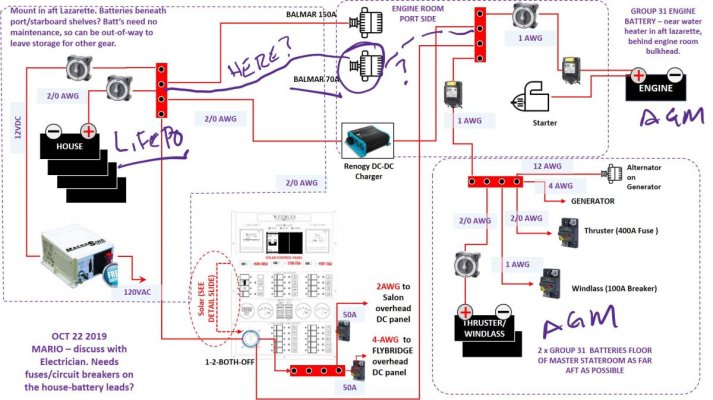
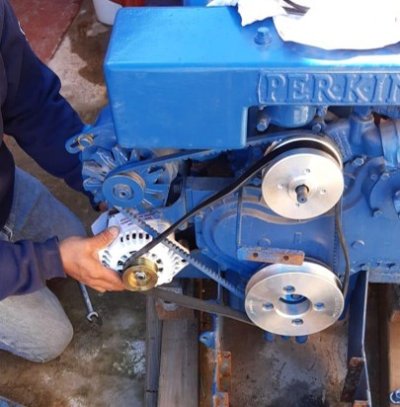
BACKGROUND (see DC diagram attached):
- Weebles: Willard 36 with single Perkins 4.236 (80hp).120VAC and 12VDC (no 240VAC, no 24VDC)
- Battery Banks:
- 600AH Lithium house
- 2x group 31 AGM for gen start, thruster, and windlass. Note, gen does not have dedicated battery. Frankly, I am out of room.
- 1x group 31 AGM for engine start
NOTE - there is a Renogy DC-DC converter between the Lithium batteries and the AGM/G31s
- Charging Sources (all new):
- 150A Balmar regulated alternator (primary)
- 70A Balmar regulated alternator (secondary - sort of a freebie - question is should I install this, and if so, where/how?)
- 15A alternator on the generator (useless?)
- 800kw solar panels
- 3.2 kw Magnum hybrid charger (shore power or gen set)
- See hand-written notes on attached diagram. I already have the two Balmar alternators. Q: Should I install the second one? Engine is out of the boat and sitting on a bench, so welding a bracket is pretty easy at this point.
- Q: If I add the second Balmar, where should I run the 70A hot?
- Same bus-bar feeding the House bank as the 150A making 220A
- Different bus bar feeding the G31s AGMs?
- Don't bother with the second Balmar?
- Something else?
- Other comments/observations are welcomed. Attached wiring diagram has been changed a bit, but for purposes of this post, is correct for the DC wiring.
Peter



